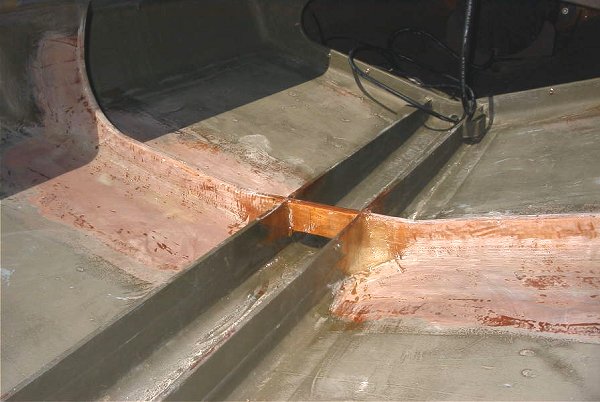I usually screw chocks to my sawhorses that match the deadrise (V) of the hull. That way, I can be sure the hull is level left-to-right (fore-and-aft shouldn't matter at this point) AND the boat is at a comfortable height.
All the best,
SJS
Important point, you can still put a twist in the hull if you aren't careful.
No matter how hard I try to screw it up I just can't seem to cob it too bad.
Straightened he trailer out today, and was too tempted to put the motor on to resist.

Built in transom saver!


















